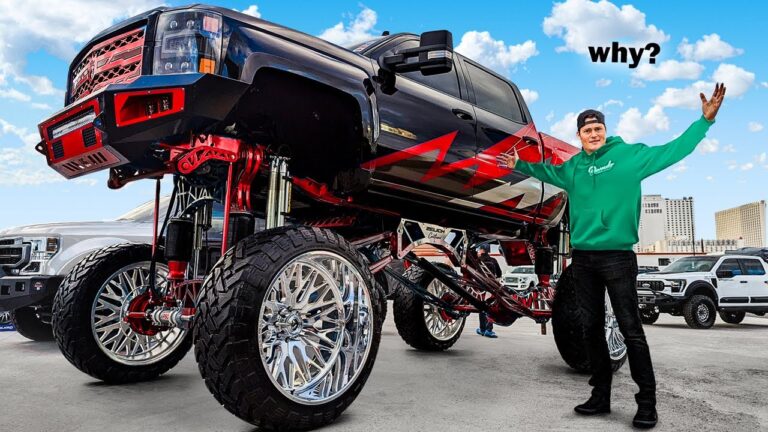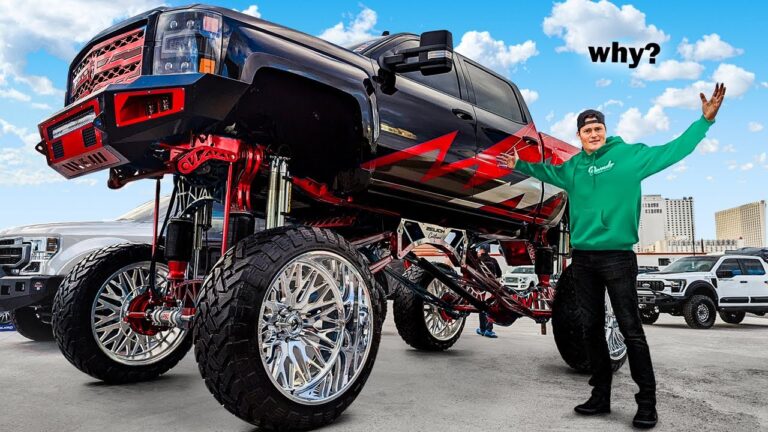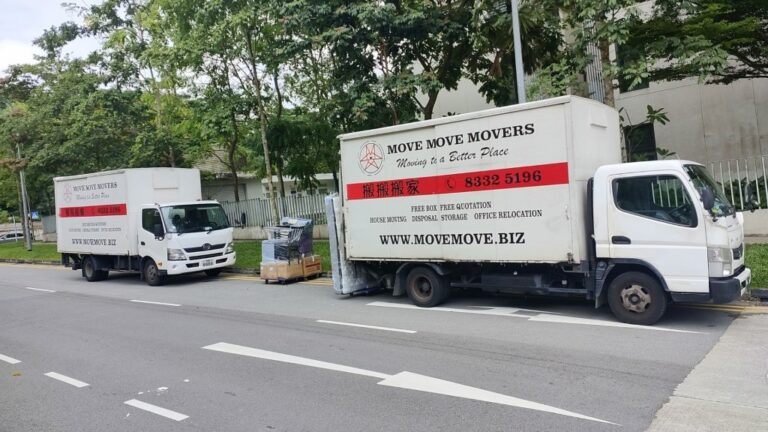Hot Oil Trucks For Sale: A Comprehensive Buyer’s Guide
Hot Oil Trucks For Sale: A Comprehensive Buyer’s Guide cars.truckstrend.com
In the demanding world of oil and gas, industrial maintenance, and specialized construction, the ability to apply controlled heat precisely and efficiently is not just an advantage—it’s often a necessity. This is where hot oil trucks come into play, serving as indispensable workhorses designed to heat and circulate various fluids, tackle stubborn blockages, thaw frozen lines, and maintain optimal temperatures for a myriad of operations. For businesses looking to expand their capabilities, replace aging equipment, or enter new service markets, the market for hot oil trucks for sale presents a significant opportunity.
This comprehensive guide will delve into everything you need to know about these specialized vehicles, from their fundamental purpose to the critical considerations involved in purchasing one, whether new or used.
Hot Oil Trucks For Sale: A Comprehensive Buyer’s Guide
What is a Hot Oil Truck?
At its core, a hot oil truck is a specialized piece of heavy equipment engineered to generate and circulate high-temperature fluids, typically oil or water, to perform specific tasks. It comprises several key components integrated onto a robust truck chassis:
- Heater/Burner System: This is the heart of the truck, typically a direct-fired or indirect-fired coil heater capable of raising fluid temperatures to several hundred degrees Fahrenheit.
- Fluid Tank: An insulated tank to hold the fluid (oil, water, or a specialized blend) that will be heated and pumped.
- High-Pressure Pump System: Designed to move the heated fluid at significant pressure and flow rates through hoses to the target application.
- Hose Reels and Hoses: Durable, high-temperature, high-pressure hoses for fluid delivery and return.
- Control Panel: For monitoring and managing temperature, pressure, flow, and safety systems.
- Safety Features: Essential components like pressure relief valves, emergency shutdown systems, flame arrestors, and thermal cut-offs to ensure safe operation.

These trucks are built for rugged environments, capable of operating in remote locations and extreme weather conditions, making them vital assets in industries where conventional heating methods are impractical or inefficient.
Key Applications and Industries
The versatility of hot oil trucks makes them invaluable across several sectors:

-
Oil and Gas Industry: This is arguably the primary market for hot oil trucks.
- Paraffin and Asphaltene Removal: Crude oil often contains waxes and asphaltenes that can solidify and build up in wellbores, flowlines, and pipelines, restricting flow. Hot oil is pumped downhole or into lines to dissolve and flush out these deposits.
- Well Stimulation and Fracturing Support: Heating frac fluid or wellbore fluids to optimize viscosity and improve flow during stimulation operations.
- Pipeline Maintenance: Thawing frozen pipelines, clearing blockages, and maintaining flow in cold climates.
- Tank and Vessel Cleaning: Heating heavy crude or residues in storage tanks to facilitate cleaning and removal.
- Winter Operations: Thawing frozen equipment, valves, and lines at drilling sites and production facilities.

-
Industrial and Commercial Services:
- Asphalt and Bitumen Heating: Maintaining the temperature of asphalt, bitumen, or other viscous materials for transport or application.
- Tank and Boiler Cleaning: Specialized cleaning applications where high-temperature fluid is required to dissolve stubborn residues.
- Thawing Frozen Infrastructure: Water lines, sewer lines, and industrial plumbing in cold regions.
- Pre-heating for Welding: Ensuring proper metal temperature before welding large components.
-
Construction:
- Ground Thawing: Preparing frozen ground for excavation or foundation work.
- Specialized Paving: Heating binders or sealants for specific road construction or repair projects.
Types of Hot Oil Trucks
Hot oil trucks come in various configurations, each suited for different operational needs:
- Truck-Mounted Units: The most common type, where the entire hot oil system is permanently mounted onto a commercial truck chassis. These offer maximum mobility and self-sufficiency, ideal for diverse field operations.
- Skid-Mounted Units: The hot oil system is built on a self-contained skid, which can be loaded onto a flatbed truck, trailer, or even a boat. These offer flexibility for projects requiring static heating or transfer between different transport methods.
- Direct-Fired Heaters: The combustion gases directly heat the fluid coil. These are generally more thermally efficient and reach high temperatures quickly.
- Indirect-Fired Heaters: The combustion gases heat an intermediate fluid (like thermal oil) which then transfers heat to the process fluid via a heat exchanger. These offer more precise temperature control and are safer for highly flammable process fluids, as the process fluid doesn’t directly contact the hot combustion chamber.
- Capacity Variations: Trucks vary significantly in tank volume (e.g., 50-barrel to 130-barrel tanks), pump flow rates (e.g., 5-20 barrels per minute), and heater BTU output (e.g., 5 million to 20 million BTU/hr), allowing buyers to match a unit to their specific job requirements.
- Specialized Features: Some units may include agitation systems for mixing, multiple fluid compartments, advanced telemetry for remote monitoring, or specialized discharge nozzles.
Why Buy a Hot Oil Truck? (New vs. Used Considerations)
The decision to buy a hot oil truck, whether new or used, depends on budget, immediate needs, and operational strategy.
Benefits of Buying New:
- Latest Technology: Access to the newest safety features, fuel efficiency, and control systems.
- Warranty: Protection against defects and major component failures.
- Customization: Ability to spec the truck precisely to your operational needs.
- Reliability: Lower likelihood of immediate mechanical issues, leading to less downtime.
- Resale Value: Generally holds value better in the initial years.
Benefits of Buying Used:
- Significant Cost Savings: The most compelling reason. A well-maintained used truck can be acquired for a fraction of the cost of a new one.
- Immediate Availability: Used trucks are often available for quick purchase, allowing faster deployment.
- Proven Track Record: If maintenance records are available, you can assess the unit’s past performance and reliability.
- Depreciation Avoidance: The steepest depreciation occurs in the first few years; buying used means someone else has absorbed that initial loss.
- Wider Selection: A broader range of models, configurations, and ages to choose from.
Potential Challenges with Used Trucks:
- Unknown History: Without meticulous records, assessing past use, maintenance, and potential abuse can be difficult.
- Wear and Tear: Components like pumps, burners, and engines will have accumulated hours and may require imminent replacement or significant repairs.
- Outdated Technology: May lack modern safety features, emissions compliance, or fuel efficiency.
- No Warranty: "As-is" purchases are common, placing all risk on the buyer.
What to Look For When Buying a Hot Oil Truck (Practical Advice)
Purchasing a hot oil truck, especially a used one, requires meticulous inspection and due diligence. This is where practical advice becomes actionable insight:
-
Condition of the Heater/Burner System:
- Combustion Chamber: Inspect for cracks, warping, or excessive soot buildup.
- Coils: Check for leaks, signs of overheating, or scaling. Pressure testing is highly recommended.
- Burner Head: Ensure it’s clean and in good working order. Ask about recent maintenance or replacement.
- Ignition System: Test its functionality.
- Fuel System: Check fuel lines, filters, and pumps for leaks or damage.
-
Pump System:
- Pump Head: Listen for unusual noises during operation. Check for leaks around seals and packing.
- Flow and Pressure: Ideally, test the pump under load to verify its rated flow and pressure capabilities.
- Drive System: Inspect belts, pulleys, or hydraulic lines for wear.
-
Tank Integrity:
- Visual Inspection: Look for dents, rust, or signs of past repairs that could indicate structural issues.
- Insulation: Ensure the insulation is intact and not waterlogged or compromised.
- Interior: If possible, inspect the tank interior for corrosion or sludge buildup.
- Gauges and Vents: Verify all tank level gauges, pressure/vacuum relief vents are functional.
-
Chassis and Drivetrain:
- Engine: Check for leaks, strange noises, excessive smoke, and proper fluid levels. Get an oil sample analysis if possible.
- Transmission: Smooth shifting, no grinding, proper fluid levels.
- Frame: Inspect for cracks, excessive rust, or signs of accident damage.
- Tires: Check tread depth and condition.
- Brakes: Ensure proper function.
- Suspension: Look for worn components.
-
Safety Features and Controls:
- Pressure Relief Valves (PRVs): Crucial safety device. Verify certification dates and last test.
- Emergency Shutdowns (ESDs): Test all emergency stops.
- Temperature and Pressure Gauges: Ensure they are accurate and calibrated.
- Flame Safeguard System: If applicable, verify its operation.
- Wiring and Electrical: Look for frayed wires, loose connections, or signs of improper repairs.
-
Documentation and Certification:
- Maintenance Records: Crucial for understanding the unit’s history, repairs, and preventative maintenance.
- ASME Code Stamps: Verify the heater coil and pressure vessels are ASME stamped and in compliance.
- DOT/Transport Certifications: Ensure the truck is road-legal and meets transport regulations.
- Original Manuals: Valuable for understanding operation and maintenance.
-
Auxiliary Equipment:
- Hose Reels: Inspect for smooth operation, leaks, and condition of hoses.
- Valves and Piping: Check for leaks, corrosion, or blockages.
- Lighting and Electrics: Ensure all lights, alarms, and electrical systems are working.
The Buying Process: Tips for a Successful Purchase
- Define Your Needs: What capacity (BTU, barrels per minute, tank size) do you truly need? What type of terrain will it operate on? What fluids will you be heating?
- Set a Realistic Budget: Factor in not just the purchase price but also potential immediate repairs, transportation, registration, and insurance.
- Research Sellers/Dealers: Look for reputable dealers specializing in heavy equipment or oilfield machinery. Check reviews and references.
- Thorough Inspection: Never buy sight unseen. Conduct a physical inspection, or hire a qualified third-party inspector specializing in this type of equipment. This is your best defense against costly surprises.
- Negotiation: Be prepared to negotiate, especially on used equipment. Don’t be afraid to walk away if the deal doesn’t feel right.
- Due Diligence on Paperwork: Verify titles, liens, and all certifications before finalizing the purchase.
- Transportation Logistics: Plan how you will transport the truck, especially if buying out of state or country.
Maintenance and Longevity
Once you’ve acquired a hot oil truck, proper maintenance is paramount to ensure its longevity and reliable operation. This includes:
- Regular fluid changes (engine oil, transmission, hydraulic fluid).
- Burner system cleaning and tuning.
- Coil inspection and descaling.
- Pump system lubrication and seal checks.
- Hose and fitting inspection.
- Annual safety inspections and pressure tests of vessels and coils.
- Adherence to manufacturer’s recommended service intervals.
Hot Oil Trucks For Sale: Sample Price Table
Please note: Prices for hot oil trucks vary dramatically based on age, condition, manufacturer, BTU rating, tank capacity, pump flow, and included features. This table provides estimated ranges for illustrative purposes only. Always obtain specific quotes and conduct thorough inspections.
| Category | Typical Year Range | Heater BTU (Approx.) | Tank Capacity (BBL) | Pump Flow (BPM) | Estimated Price Range (USD) | Key Features/Notes |
|---|---|---|---|---|---|---|
| Used (Older/Basic) | 2000 – 2010 | 5M – 10M | 50 – 80 | 5 – 10 | $40,000 – $80,000 | High hours, potential for significant repairs, basic controls. |
| Used (Mid-Range/Well-Maintained) | 2011 – 2018 | 10M – 15M | 80 – 100 | 10 – 15 | $80,000 – $150,000 | Good condition, some modern features, maintenance records often available. |
| Used (Newer/High-Spec) | 2019 – 2023 | 15M – 20M+ | 100 – 130+ | 15 – 20+ | $150,000 – $300,000+ | Excellent condition, advanced controls, lower hours, often direct-fired. |
| New (Entry-Level) | Current Year | 10M – 15M | 80 – 100 | 10 – 15 | $350,000 – $500,000+ | Standard configurations, full warranty, latest emissions. |
| New (Custom/High-Performance) | Current Year | 15M – 25M+ | 100 – 130+ | 15 – 25+ | $500,000 – $800,000+ | Fully customizable, top-tier components, advanced automation. |
BBL = Barrels, BPM = Barrels Per Minute, M = Million BTU
Frequently Asked Questions (FAQ)
Q1: What is the primary use of a hot oil truck?
A1: The primary use is to heat and pump fluids (typically oil or water) at high temperatures and pressures to clear blockages (like paraffin in oil wells), thaw frozen lines, or maintain fluid temperatures in industrial and oilfield operations.
Q2: How much does a hot oil truck cost?
A2: The cost varies significantly. Used hot oil trucks can range from $40,000 for older, basic models to over $300,000 for newer, high-spec units. New trucks typically start from $350,000 and can go upwards of $800,000 for custom-built, high-performance models. Refer to the price table above for more detail.
Q3: What permits and certifications do I need to operate a hot oil truck?
A3: Operating a hot oil truck requires specific permits related to commercial vehicle operation (e.g., CDL with hazmat endorsement if carrying certain fluids), and potentially permits for operating pressure vessels (ASME stamps) and environmental compliance (emissions). Regulations vary by state and country, so consult local and federal authorities.
Q4: Can I convert a regular truck into a hot oil truck?
A4: No, converting a regular truck into a hot oil truck is not feasible or safe. Hot oil trucks are highly specialized vehicles designed with reinforced chassis, specific power take-off (PTO) systems, integrated heater and pump systems, and extensive safety features that cannot be retrofitted to a standard truck.
Q5: What fuel do hot oil trucks use for their burners?
A5: Hot oil truck burners typically use diesel fuel, propane, or natural gas. Many modern units are multi-fuel capable, offering flexibility based on availability and cost.
Q6: How often should a hot oil truck be inspected?
A6: Beyond daily pre-operation checks, a comprehensive inspection by qualified personnel should be performed regularly, often quarterly or annually, depending on usage and regulatory requirements. Pressure vessels and safety relief valves have specific recertification schedules (e.g., ASME and API standards).
Q7: What’s the difference between direct-fired and indirect-fired heaters?
A7: A direct-fired heater heats the process fluid directly by combustion gases passing over the fluid coils. It’s generally more efficient but might not be suitable for highly volatile fluids. An indirect-fired heater uses an intermediate heat transfer fluid (like thermal oil) that is heated by combustion, and then this hot fluid heats the process fluid via a heat exchanger. This offers safer operation for flammable fluids and more precise temperature control.
Conclusion
The market for hot oil trucks for sale represents a crucial opportunity for businesses to acquire powerful, versatile assets capable of tackling some of the most challenging heating and fluid transfer tasks in industrial and energy sectors. Whether you opt for the cost-effectiveness of a well-maintained used unit or the cutting-edge technology and warranty of a new one, a thorough understanding of their components, applications, and critical inspection points is paramount.
By following the practical advice outlined in this guide, defining your needs clearly, and exercising due diligence, you can make an informed decision that secures a reliable and productive hot oil truck, empowering your operations for years to come. This investment, when made wisely, can significantly enhance your operational capabilities, improve efficiency, and open doors to new service opportunities in a demanding industry.





